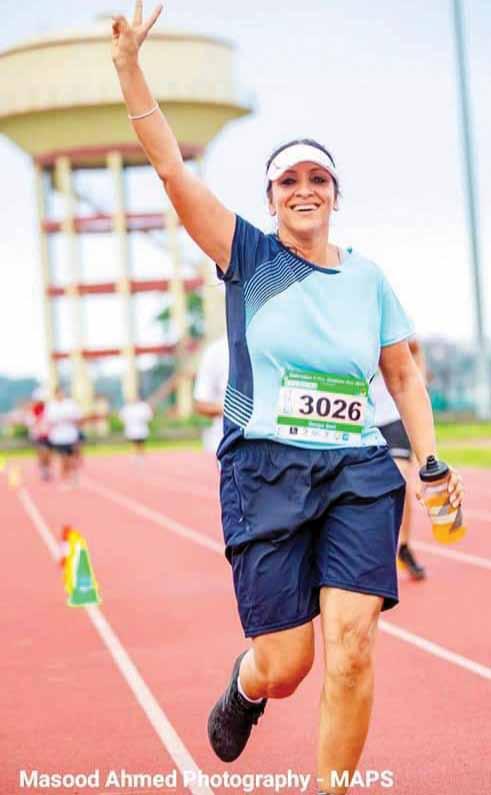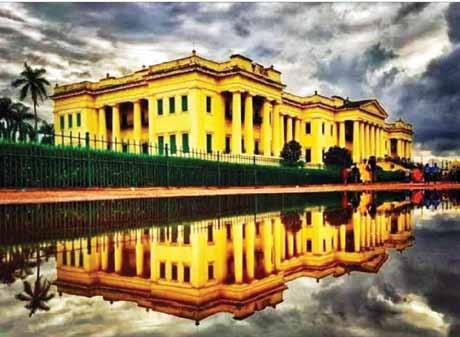
17 minute read
Part 2: Heritage Tourism
Part 2: Heritage Tourism : A revival story in Eastern India
By Indranil Halder
(1: Hazarduari Palace , Murshidabad )
“Tourism is too important a resource to be left to the tourism professionals. It needs to be part of a community mobilisation strategy that can reinvent the role of heritage so that it serves the needs of everyone.” - Robert H. McNulty, founder and president of Partners for Livable CommunitiesBob McNulty(USA).
In 2020, Australia heritage tourism is promoted with home-stays in pristine rural properties or cultural engagements with members of the Australian indigenous community in Uluru. In 2017, when the Indian polo team with HH Maharaja Sawai Padmanabh Singh of Jaipur visited Sydney for the World Polo Championship, they were welcomed by Australian polo veteran John Wayland to the polo properties of Windsor, NSW. There, the Indian team practised and lived on beer, BBQs and Indian sweets to prepare for the Championship. The Prince of Jaipur was not the only Indian royal to enjoy Australian heritage life and promote heritage tourism. The last Nizam of Hyderabad, Mukarram Jah purchased a 200,000-hectare outback station in Western Australia and a mansion, named Havelock House, in Perth, in the 1980s. The mansion was stuffed with antiques brought from his Hyderabad palaces, so he could enjoy his life in Australia. The Nizam of Hyderabad Jah became a part of Western Australia heritage.
According to the National Trust in Australia, “They are one of the most significant owners and operators of heritage places with more than 300 properties nationwide. Heritage tourism provides an excellent opportunity to showcase heritage places across Australia, to increase understanding and support for their conservation and to promote innovative contemporary uses for our heritage assets.”
(2:Pathuriaghata Tagore Castle)
With Indian heritage properties welcoming guests in high volume, it feels like justice finally will be done to many

Pathuriaghata Tagore Castle
hundreds of eastern Indian heritage property clusters such as Cooch Behar/ South Dinajpur (95 properties), Murshidabad (99 properties) and South of Bengal (60 properties).
Twenty five years ago, I used to live in the eastern Indian city of Kolkata where I had over 500 years of heritage buildings all around me. During my time in Kolkata, I learnt that the city was once known as the City of Palaces because of the number of palatial public and private properties such as the Writers Building, Pathuriaghata Tagore Castle (similar to a famous landmark in the Scottish highlands, Balmoral Castle) and Dhanyakuria Gayen Bagan Bari (a stately home). Swarnali Sikder from Australia India Travel & Tourism Council (AITTC) said, “The unique architectural presentation of Kolkata was highlighted in Australian author Joanne Taylor’s book, The Forgotten Palaces of Calcutta. These forgotten palaces are an important part of Kolkata heritage.”
(3:Dhanyakuria Gayen Bagan Bari)
Once upon a time in Kolkata, Belvedere House became the hub for The Viceroy’s garden parties which were attended by British officers, diplomats and Maharajas. While Woodland Palace became the hub for polo parties with Cooch Behar royals and guests from the Nepal, Burdawan and Jaipur Royal families. Pathuriaghata Tagore Castle become the hub for classical Indian music, attended by distinguished foreign travellers visiting India at the time, including Asian royalty,
Dhanyakuria Gayen Bagan Bari)

European royalty and American dignitaries such as the 18th American President, General Ulysses S Grant (1822–1885).
The city of Kolkata and Bengal presidency had generated enormous wealth for many decades. It was the second most important global port city after London during the British Raj. The city was the hub for natives and traders from Portugal, France and Denmark among many others across the globe. British Raj Government buildings soon flourished. Funded by Bengalis during the 19th century, numerous palatial homes, family mansions and Zamindari properties crowded Kolkata and nearby districts. These properties showcase the fusion of Indian, European and Mughal architecture. Sydney based architect and Vice President of Australia India Business Council, Amitava Goswami said, “Eastern Indian heritage properties with Mughal, European and Hindu influences are the heritage we need to preserve.”
( 4: Raja Rammohan Roy’s mansion Social Benefits:
Even though Eastern India’s contribution to Heritage tourism is negligible, it has not completely vanished. Marble Palace with its marble floors, art collections and traditional Bengali architectural elements is one such stately home to continue the tradition. Apart from the architecture, marble floors and the collection of art at Marble Palace, what drew my attention was the story connecting the palace to social development. The leadership of Suvendro Mullick (a descendant of Raja Rajendra Mullick) has changed the lives of many underprivileged kids.
Raja Rammohan Roy’s mansion

In the 1980s, he started playing polo. As a polo player, he travelled around India. He introduced bicycle polo in a town named Habibpur, just outside of Kolkata, and his aim was to help with social development.
Today, more than 80 boys and girls team up for the customary cycle polo matches. Suvendro Mullick has trained Bengal’s cycle polo teams through the only institute in West Bengal. No wonder that the Habibpur Polo Academy’s women’s team is successful in winning the CCFC (Cycle Polo, Calcutta Cricket & Football Club) Kolkata Cup cycle polo tournament.
( 5:Eastern Indian Polo Heritage
This social development story has given wings to my imagination. One day very soon, we will be experienc

Tintin infront of Joransanko Thakurbari

ing a game of bicycle polo being played between Habibpur Polo Academy and global tourists on the green lawn of Marble Palace. The statues of Praxiteles to Phidias, Venus to Apollo and Homer to Diana surrounding the garden will create a perfect The Great Gatsby scenario which will put Kolkata on the heritage travel map with a purpose.
It will be a show-stopper! The Marble Palace has all the attributes to highlight the importance of heritage property. Kolkata, as the birthplace of modern heritage polo games and the social uplift, will draw global wealthy polo playing tourists.
(6:Tintin infront of Joransanko Thakurbari)
Joransanko Thakurbari, ancestral home of noble laureate Rabindranath Tagore and the mansion of Raja Rammohan Roy and Basu Bati, is ingrained with the eastern Indian culture. Their presence is so obvious that even Hergé’s Tintin character from Brussels found a Bottle of Bangla ( country liquor) and Kolkata’s heritage properties irresistible.
(7:Heritage Walk Flyer )
This sense of social connection is revived with regular heritage walks organised by Kolkata city’s history buffs. This heritage revival has also been witnessed in other eastern Indian states, including Tripura and Odisha.
Heritage Walk Flyer

ago, Bharat or India was very much influenced by the happenings in the global city of Kolkata -- while being divided into as many as 550 princely States, each with their own custodians, governments and laws. In eastern India, many of these heritage property custodians with a strong sense of nationalism exhibited great leadership in the pursuit of the ultimate integration of democratic India. A similar kind of leadership, is needed today to help the eastern Indian heritage tourism sector develop tourism, revenue and social engagements.
( 8:The Belgadia Palace, Odisha)
The young La Martinière-educated Rajkumari Akshita M. Bhanj Deo from the Belgadia Palace, Odisha is providing great leadership for the eastern Indian tourism sector with her own heritage property. Maharani Sumitra Devi Bhanj Deo ordered the construction of the

Resilience: Historic Houses & Their Custodians by Center for Historic Houses Flyer palace in 1804. Situated in a lush green, rolling hills and sparkling waterfalls, the palace highlights the classical Western style of Doric-Corinthian column architecture. The palace is still occupied by the Maharajah, as well as the present Queen mother and the Queen of Mayurbhanj from the royal families of Nepal and Jaisalmer respectively.

Rajkumari Akshita M. Bhanj Deo was the speaker for a Center for Historic Houses online series, Resilience: Historic Houses & Their Custodians which was presented by OP Jindal Global University, Sonipato, India. The talk highlighted social entrepreneurship in boutique heritage tourism industry.
(9:Resilience: Historic Houses & Their Custodians by Center for Historic Houses Flyer )
According to the online series information, “The region is very rich in its arts and culture -- from endangered crafts such as Dokra (an ancient wax casting art form) to Mayurbhanj Chhau (a martial arts dance form) which definitely is a great selling point.”
Local art and crafts are always a great selling point. During my stay at Bulgari Resort, Bali (a heritage fusion of traditional Balinese form and Italian style), I purchased a bronze Ganesh statue. In my Sydney residence, the statue stands as an homage to local craftsmanship of Hindu art in Bali, and also eastern Indian States. These eastern Indian States house thousands of highly decorated heritage temples, Viharas and Chaitayas once fundamental in the development of the religion and spread of printing techniques in rural South East Asia. Local art and culture as a part of heritage tourism has long term financial benefits throughout the countryside.
Located In the district of Mayurbhanjis the palace of a family who ruled for over 1000 years, is a fantastic tourist experience. The Belgadia Palace, Odisha, has an incredible collection of art by renowned artist Hemendranath Majumdar among many other works. The palace has hosted several well-known personalities and foreign dignitaries, from Mark Shand (Late brother of Camilla Parker Bowles, Duchess of Cornwall) to Gyanendra Shah, King of Nepal, and Keshab Chandra Sen (Bengal Renaissance Reformer). Rajkumari Akshita M. Bhanj Deo also posted a brilliant fashion photography video to promote her property as part of the online series.
(10:Neer Mahal, Tripura) Fashion Photography Benefits:
One Sydney Sunday afternoon in July 2020, I noticed a Facebook update from a Kolkata based boho-chic model Riya Bhattacherjee. It was an eye catching video of a magical fashion photoshoot in Neer Mahal palace. The palace was built by Maharajah of Tripura, Sir Bir Bikram Kishore Debbarman Manikya Bahadur as his summer water palace in a manmade lake named Rudrasagar. The surreal splendid grandeur of the Hindu architectural style deserves anyone’s attention. Though this palace is not as famous as another Agartala heritage property, Ujjayanta Palace, the empty palace not only came to life but also highlighted the idea
Neer Mahal, Tripura

of social cohesion in the eastern Indian society through fashion and photography.
The heritage of photography in eastern India goes back to 175 years. Eastern India is part of a great history of signature portraits, artistic photography and timeless heritage living through classic photography.
(11:The Chrone Room, Government House, Kolkata by Bourne & Shepherd Studio)
This world of photography captured the local heritage and included photographs by Bourne & Shepherd Studio (the world’s oldest studio) at SN Banerjee Road; Hop, Singh & Co (a studio with one of first few female photographers: Mrs. Bibra) at 2-5 Chowringhee Street; and Mitter & Co (first Bengali studio) at 107 Radhabazar Street in Kolkata. Maharani Monmohini of Tripura, who was a keen photographer, added more colour to photographic world of Eastern India. Fashion brings people from different layers of society together.
(12: Pranay Badya Invitation Card) Financial Benefits:
These eastern Indian heritage properties certainly have the potential to generate awareness, significant tourist revenue and jobs. The global travel and tourism market was valued at USD 7,581 Billion in 2014 (10.0% of GDP). It is projected to be USD 11,382 Billion (10.6% of GDP) by 2025. At the same time, Indian tourism is important for the country’s economy and is growing rapidly.
(13: Salia Shree Palace, Balagir, Odisha )
Salia Shree Palace, Balagir, Odisha

The World Travel and Tourism Council calculated that tourism generated US$240 billion while providing jobs to over 42 million people. Furthermore, the current global value of culture and heritage tourism is reported to be well over $1billion dollars, with that of the Asia Pacific region being approximately $327 million.
The time is impeccable for eastern Indian heritage proprieties to enjoy the golden era of Indian tourism, and to improve revenue and employment for sustainable survival. With proper collaboration, planning and road maps for improvement, both private and public sectors can work together to grow the Indian tourism market by restoring heritage properties in a way that helps social development while enhancing tourist experiences. For example, Incredible India’s extraordinary Murshidabad ivory art works in the heritage palace of Hazarduari was a huge online success, creating awareness and engagement with global tourists.
( 14:Kangla Palace, Manipur)
The heritage tourism industry will require strong leadership by the custodians of Eastern India’s heritage properties. On-going online education to show how to revive these properties is needed, in addition to constant use of photography as a medium to attract tourists to these properties. Involvement of local, State and Federal Government and collaboration with the Indian National Trust for Art and Cultural Heritage (INTACH) and Archeological Survey of India will ensure the industry becomes a great
Kangla Palace, Manipur

success. Custodians of eastern Indian heritage properties have started playing a major role in the development, funding and implementation of solutions to social, cultural, or environmental issues, too. The glory days of eastern India are not over a rebirth is beginning to take shape. These irresistible eastern Indian heritage properties can be revived and sustained by heritage tourism in the 21st century.
(15:Jhargram palace, Midnapore, West Bengal)
Jhargram palace, Midnapore, West Bengal

The heritage properties of South Bengal, Bihar, Odisha could be used for tourists to savour a heritage lifestyle through book clubs, whisky tasting nights and tea parties. Heritage properties of Sikkim, Tripura and North Bengal could be an enchanting and luxuriant background for life painting, body building events, media and popular musical video clips.
(16:Panchkote Palace in Kashipur, Purulia, West Bengal)
The idea of using vintage cars to promote heritage tourism is nothing new. In Italy and the South of France, tourists can stay in heritage properties, admire the beauty of the lush Tuscan countryside and French Riviera. They can then arrive in style at some of Milan’s most fashionable shops, all while behind the wheel of a vintage 1960s European convertible. This should be implemented sooner than

later, so that we can travel in a vintage car between properties for breakfast, lunch and dinner parties in Murshidabad. As well as enjoying the markets of heritage textiles such as Murshidabad silk. It could be the La Dolce Vita road trip of Murshidabad .
(17:Vintage Car Rally Poster)
Vintage Car Rally Poster
An even bolder step by State Governments of eastern India would be to create an incentive such as Italy’s one-dollar property selling campaign. Designed to renovate, rejuvenate and return tourists, such incentives can help raise foreign capital. This may help to overcome the challenges of disrepair, falling tourist revenue and lack of funding.
According to Julia Booth from eastern suburbs of Sydney, it would be great to create a crowdfunding collaboration with local cultural heritage restoration platforms, similar to Dartagnans, in France, to help restore a heritage property in eastern India with funds from thousands of donors across the globe who would then end up owning a part of their funded property.
(18:Calcutta Bunglow restored by
Panchkote Palace in Kashipur, Purulia, West Bengal
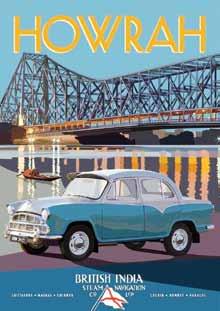
Swarup Dutta )
Calcutta Bunglow restored by Swarup Dutta

The survival of eastern Indian heritage properties can be enhanced by the collective support, experience and encouragement of globe-trotting NRIs. With our combined effort, the words ‘neglected ‘ and ‘forgotten’ can be erased from our vocabulary.
Social media platforms created by models, fashion photographers and fashionistas means that they can be the ambassadors of Eastern Indian heritage properties and help open the floodgates of tourists to over 300 such properties.
This integrated approach would bring tourists to the eastern Indian States to enjoy a matchless heritage lifestyle experience of global significance.
(19:French guest , Gajamoti Room)
It is in this spirit, that we Halders have focused on encouraging heritage tourism at our Kamala Niwas property in Ballygunge, Kolkata. We invite our local, national and global guests to our Gajamoti Room in Kamala Niwas for authentic Bengali cuisines, to conduct photoshoots and to enjoy vibrant indigenous heritage
French guest , Gajamoti Room
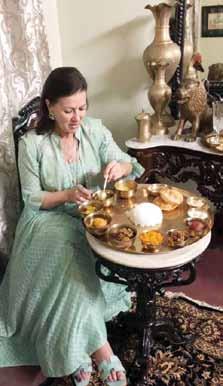
handloom fabrics and accessories. The real winners have always been our guests, avid admirers of eastern Indian heritage, who found new and unique aspects of travel, and left with fond memories of an unforgettable experience.
(20: Bengal Thali ,Gajamoti Room, Kamala Niwas )
Bengal Thali ,Gajamoti Room, Kamala Niwas


Doon Valley .... Foothills of the Himalayas!
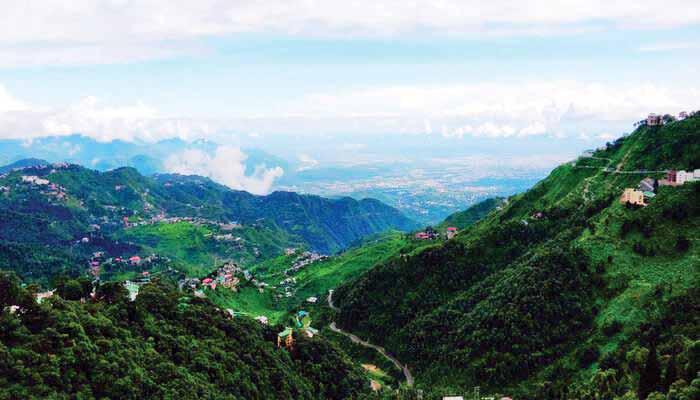
In conversation with Roopa Soni from Dehradun.
Daljeet Bakshi
Its months now that Covid 19 has restricted travel and leisure opportunities across the globe. Virtual tours are the only ones which is feasible these days during this pandemic. But still, hope is alive
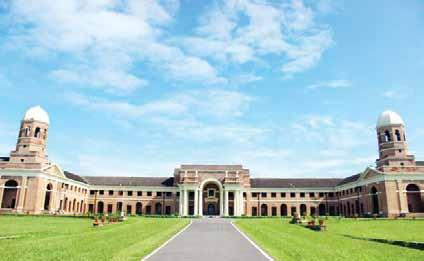
that pandemic is over soon and people can travel, enjoy life as usual it was before.
Recently, we had a wonderful opportunity speaking to Roopa Soni from Dehradun (India), an Entrepreneur, Cyclist, Marathon runner, Social activist, Public speaker and a parental coach. Married for the last 20 years Roopa Soni, a proud mother of two kids always wanted to create a difference .From assisting her husband in the hospitality business to being a marathon runner and an avid cyclist lives life to the fullest. Joining an NGO “Humans for Humanity”, a feather in a cap to help women out there, to know of their values and wants. Roopa also extends her hand to be a volunteer to the blind students of a NIVCH as and when possible. Public speaker and a communicator pick up various health and women related topics on social media, and is a strong advocator of women empowerment.

Roopa Soni assists her hubby in their hospitality business, a chain of Hotels across major tourist destinations of North India and shared valuable information about Doon Valley .Here is the synopsis of information shared by her about Dehradun, a remarkable destination for tourists.
Dehradun is located in the Doon Valley on the foothills of The Himalayas nestled between the river Ganges on the east and river Yamuna on the west. It is one of the oldest cities of India, bejewelled like a glittering jewel in the lower Himalayan ranges. It is also known as the “Abode of Drone”. Dehradun is made up of two words” Dehra” and” Doon”. Dehra means camp and doon is a term used for a valley that lies between The Himalayas in the shivalik .It serves as a major gateway for travelers .riding to many mesmerizing hill towns in Uttarakhand like Dhanulti, Chakrata, New Terhi , Uttarkashi etc.
Dehradun is a notable academic and research hub and is a home to Indian Military Academy, Rashtriya Indian Military College, Forest Research Institute etc.It is privileged to have the NIVCH, Asia’s no.1 Institute for Visually Impaired Institute, and the institute and works for the rehabilitation of visually Impaired. Dehradun being the capital city of Uttrakhand often referred as Devbhoomi meaning “Lands of God”. Blessed with the natural wonders like lofty peaks, shimmering lakes and streams, lush forests, pleasant climate, numerous adventure sports destinations and competition. Hindu pilgrimage centres. The culture of Dehradun presents a fine blend of exotics number of festivals are celebrated in the Dehradun –the state only like Makar Sakranti, Basant Panchami, Phool Dei, Harela, Bat savatri etc. not only these local festivals Dehradun take pride and happiness in celebrating major Indian festivals like Diwali, Navratri, Edul-ul-Fitr.Christmas etc. To add to its richness and abundance of special Basmati and bakery products. Rice, tea and leechi gardens which contribute to turn this city into a paradise. Ministry Of urban development, Government of India has selected Dehradun to Submit Smart city proposal and participate in 100 smart city challenges.
